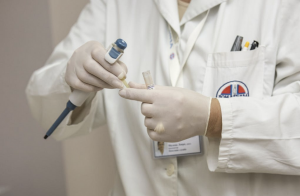Pharmacy Technology Solutions For The DIR Fee Profit Squeeze
Pharmacy technology – Earlier this year, New York City pharmacy owner Bob Hopkins told local television station WPIX that his drug reimbursement rates had decreased by 40 percent over the previous six months. “Which means,” the report noted, “every time he rings up a drug, he might be losing money.” This is why having the right pharmacy technology solutions in place to manage reimbursement data is important for your pharmacy.
This experience was echoed by another New York City pharmacist, Stephen Cilento, who co-owns Bridge Pharmacy in Bay Ridge, Brooklyn. Cilento told local publication The Brooklyn Daily Eagle as many as one-third of prescriptions filled by his pharmacy are reimbursed at a rate below his whole-sale purchase price.
Each of these pharmacy owners attributed responsibility for the reduced reimbursement rates to pharmacy benefit managers (PBMs) – the third parties that act on behalf of insurance companies and other payers to negotiate prescription drug prices with manufacturers, and determine pharmacy reimbursement rates through pharmacy technology solutions.
These examples follow findings of a study commissioned by the Pharmacists Society of the State of New York (PSSNY), which examined PBM practices statewide and found:
- Pharmacy gross profit margins on generic drugs were reduced by 83 percent between Q1 2016 and Q4 2017;
- Pharmacies were paid less than what it cost them to dispense a generic drug 99 percent of the time during Q4 2017; and
- Pharmacies were paid less than the national average invoice cost of generic drugs 46 percent of the time. “In other words,” the study noted, “pharmacies were underwater on nearly half of claims.”
New York wasn’t the only state to delve into current pharmacy practices.
Last year Arkansas joined 37 other states in enacting legislation – the PBM Licensure Act – which promised to hold PBMs more accountable by requiring licensing by the state insurance department. But a year after the law took effect, pharmacy technology solutions show reports of declining reimbursement rates are still prevalent.
“There have been some improvements, but it’s far from a fixed problem,” John Vinson, executive vice president and CEO of the Arkansas Pharmacists Association told Arkansas TB&D news website. Vinson noted that just the day before, he received a call from a pharmacist who was reimbursed $20 for a drug that had cost $105 to purchase. The reimbursement rate had been $150 just a month before. Having the right pharmacy technology solutions in place will help you better keep track of your reimbursement rates.
Similar stories can be found among pharmacies nationwide. PBMs reject the notion they are at fault, and in response to the New York survey, the Pharmaceutical Care Management Association (PCMA) issued a statement that noted, in part: “The role of PBMs is to reduce prescription drug costs and improve the quality of pharmacy benefits for their clients. It is not to enrich independent drug stores, who are continuously pushing an agenda that increases their bottom line at the expense of patients.” However, having the right pharmacy technology solutions will help the pharmacy owner keep track of DIR and GER fees.
Regardless of where the fault lines, the fact remains that pharmacies have seen a sustained decrease in reimbursement rates that is affecting profitability and for many, their very existence.
But falling reimbursement rates aren’t the only profit pressures felt by today’s pharmacies. Omnipresent threats of DIR fees, price “spread” practices and reduced dispensing fees are also considerations.
According to the Healthcare Information and Management Systems Society (HIMSS), spread pricing “occurs when health plans contract with a pharmacy benefit manager to manage their prescription drug benefits, and PBMs keep a portion of the amount paid to them by the health plans for prescription drugs, instead of passing the full payments on to pharmacies. Pharmacy technology solutions can help your pharmacy better manage spread pricing.
“The spread,” HIMSS notes “is the amount between what the health plan pays the PBM and the amount the PBM reimburses the pharmacy for the beneficiary’s prescription.”
A 2019 investigative report by the New York State Senate’s Committee on Investigations and Government Operations called spread pricing a source of “significant revenue” for PBMs.
Spread pricing is most often used in conjunction with generic drugs, which account for almost 90 percent of all prescriptions dispensed in the United States. Last year, investigative reporters at Bloomberg took a nationwide look at the practice, and determined that spread pricing costs state Medicaid plans and insurance providers millions of dollars annually.
The Bloomberg reporters examined pricing and reimbursement practices for 90 different generics, across multiple state programs. This included pricing practices for aripiprazole, a generic anti-psychotic drug. The investigation found that although the market price for the drug dropped to about $20 per month during 2017, “many state Medicaid plans, including in Ohio, New York, Arizona and Texas, were still paying more than $140 a month.”
Similarly, the study found that in late 2017, “private Medicaid plans in Indiana spent more than $800 for a 30-day supply of entecavir, a hepatitis B pill that costs pharmacies less than $140 to buy. State plans paid more than $100 per prescription for generic versions of the heartburn drug Nexium, which cost pharmacies less than $25 at the time.” However, when asked, Indiana pharmacists claimed they were only receiving a “tiny slice” of those markups. “We’ve seen nothing but declining margins,” one independent pharmacy owner told the Bloomberg team. Using pharmacy technology solutions will come in handy during a pharmacy audit.
Direct and indirect remuneration (DIR) fees, according to the American Pharmacists Association (APhA), refer to “price concessions not reflected at POS for pharmacies participating in Medicare Part D networks. Accessed weeks or months after Part D beneficiaries prescriptions are filled, the retroactive fees complicate decisions about staffing and whether to expand or even keep open a business. Pharmacies may not realize until long after a prescription is filled that they didn’t even recoup their costs.”
In addition to recouping rebates and other post-POS price concessions, DIR fees can be assessed based on arbitrary factors, usually with little advance notice to the pharmacy. The New York Senate report cites DIR fees which include “costs for pharmacies to participate in a Part D preferred network, price reconciliations based on contractual rates, and compliance fees for contract-based metrics.”
National Community Pharmacists Association (NCPA) Director of Congressional Affairs Adam Harbison said in a 2019 presentation that pharmacy DIR fees “have increased 45,000 percent in less than 10 years, raising drug prices and putting many pharmacies out of business.”
Reduced Dispensing Fees Through Pharmacy Technology Solutions
Dispensing fees refer to the amount paid to a pharmacy to cover the costs of providing a drug to a patient. Several factors fall under the umbrella of a dispensing fee including labor costs, transportation, storage and patient counseling. According to RxSafe™, “the national average cost of dispensing medications is $10.55 per prescription – not including pharmacy profit – but Medicaid only reimburses a dispensing fee on average of $4.50 per prescription. Under Medicare, the pharmacist is paid even less — $2.27 per prescription. This is why pharmacy technology solutions are important. In group-health plans or private insurance, a PBM negotiates the dispensing fee with the individual pharmacies, typically at 40 percent off the usual and customary dispensing fee charge.”
For many pharmacies, the cumulative effect of reduced reimbursement rates, increased DIR fees, decreased dispensing fees, and spread pricing can seem overwhelming. And it probably helps explain why a 2019 survey of New York City pharmacists found 99 percent are concerned about negative consequences for their businesses, with 70 percent saying they had already laid off workers or reduced store hours.
Pharmacists Seek Legislative, Regulatory Relief
With so much at stake, it’s not surprising that pharmacies across the nation are joining forces to fight what many perceive to be existential threats. At the federal regulatory level, a 2019 industry-led effort came close to persuading the U.S. Department of Health and Human Services to revise Medicare Part D pricing structures so that point-of-sale pricing would include all pharmacy price concessions. Although that effort ultimately failed, it marked the closest the agency has come to addressing the issue.
Legislation has also been introduced in the U.S. Congress, S.988/H.R. 803, the “Improving Transparency and Accuracy in Medicare Part D Spending Act,” which among things, would prohibit retroactive pharmacy DIR fees.
At the state level, the National Conference of State Legislators (NCSL) reports state auditors in Kentucky, New York, Ohio, Pennsylvania, Texas and West Virginia have begun looking into pharmacy spread pricing practices in their states, although no legislative solutions have yet been enacted.
Also at the state level, laws have been enacted in 38 states seeking to hold PBAs accountable by imposing limits on pharmacy audits, and/or by imposing PBA registration requirements.
Pharmacy Technology Solutions to the Rescue
It just may be though, that a pharmacy’s best weapon could be its pharmacy technology system – the same system that serves as “command central” in managing everything from daily workflow to seamless refills to inventory and records management.
Pharmacy managers may be surprised to learn they are really just scratching the surface when it comes to accessing the full scope of their pharmacy technology system’s capabilities. A pharmacy that relies on its system for “refill management,” for example, may not take the next logical step of linking to an automated inventory management system.
A pharmacy manager may be pleasantly surprised to learn that its existing technology system offers significant options to improve efficiency, thereby off-setting some of the onerous and costly effects of declining reimbursement rates and other PBA-related issues.
- Minimize mistakes. Since a pharmacy has little control over its drug reimbursements, it can better manage the dispensing process to minimize mistakes and ensure full reimbursements are received. Pharmacy technology solutions can help in several key areas:
-
- Proper drug codes. An advanced pharmacy technology system will be linked to the National Drug Code, which will ensure proper identification codes are included on claims. Erroneous classifications can lead to improper reimbursement, and even outright claims denial.
- Proper dispensing. An automatic pharmacy dispensing system will ensure that accurate quantities of a drug are measured. This eliminates any risk of human error, which can occur when a pharmacy technician becomes distracted, or simply makes a mistake.
- On-time refills. Refills-filled-too-soon is another top reason for reimbursement denials. A pharmacy technology based refill system will automatically monitor a patient’s record, and alert the pharmacist if a refill order has been requested before the appropriate date. Improper refills are also a major “red flag” for PBM auditors, so a refill-management process has the added benefit of helping to minimize the risk of an audit.
- Improved pharmacy inventory management. With a pharmacy technology solution enabled, automatic order system in place, a pharmacy can minimize the risk of holding expired or obsolete drugs in its inventory. In addition, pharmacy technology solutions will continually track bin contents, and alert pharmacy staff when a prescription has not been picked up. The system will generate a reminder to the patient and, ultimately, will add any unclaimed medication back into inventory.
Not only will improved pharmacy inventory management help control spending, but a pharmacy can also free up valuable storage space, to offer additional in-demand products.
- Pharmacy eCare Plans. A relatively new trend in healthcare management is the emergence of pharmacy eCare plans. Through an eCare plan, a pharmacy maintains – and regularly updates — comprehensive records for all services provided to a patient including medication history, consultations, lifestyle plans, and medication adherence strategies. The eCare plan can be shared across a patient’s team of healthcare providers, and used to validate pharmacy reimbursement claims for value-added services.
- Increasing number of prescriptions. An obvious way for a pharmacy to improve profitability is to increase the number of prescriptions filled. A pharmacy can achieve this by improving patient adherence rates (described below), or by expanding its viability as a “preferred network pharmacy.” This can be accomplished through metric-based reporting, which will allow a pharmacy to easily document its efficiency to health plans and PBMs.
- Demonstrate efficiency for plans looking to boost star ratings. A pharmacy can also use metric-based reporting to demonstrate its performance to health plans looking to maintain – or improve – their “star rating.”
A pharmacy that prioritizes responsiveness to Centers for Medicare and Medicaid Services (CMS) Five-Star Rating requirements could improve its appeal as a “preferred pharmacy,” thereby potentially increasing its customer base. Pharmacy Technology related capabilities include:
- Medication Adherence: A Pharmacy technology system provides the pharmacist with ready access to a patient’s medication history, which can be used to explain how a particular drug works, and discuss any potential side effects.
In addition, a pharmacy can automatically generate outbound text messages, emails and phone calls, as a way to remind patients about renewals and pickups.
- Comprehensive Medication Review. An integrated system can manage CMR process requirements in key ways that include:
-
- Identification of eligible patients
- Determination of ideal medication dosages and usage schedules
- Syncing of all medications so that all pick-ups occur on a single day
- Availability of information describing purpose of each medication, along with information about potential side effects
- Tracking of all pharmacist-patient interactions
- Outbound texts and phone calls to remind patients about scheduled refills.
- Ease of Obtaining Medications. A comprehensive pharmacy technology system will allow electronic transmission of a prescription, and seamless processing from the point it is received and recorded, entered into the queue, filled and marked for pickup.
In addition, many systems now offer apps that allow for 24/7 refill orders, whereby a patient can quickly request a refill from any internet-connected device.
- Use of Statins. With CMS now assessing information about diabetes patients who are prescribed statins, a pharmacy’s technology system can easily identify affected patients, notify them about the role of statins in diabetes management, and initiate the process for obtaining a prescription.
- Key Performance Indicators. A pharmacy can rely on its pharmacy technology system for customized reporting on self-identified metrics. An advanced system will allow detailed analysis of that data, and provide a pharmacy manager quick access to reports and graphs detailing performance across a range of functions. This detailed reporting can help a pharmacy manager easily determine strengths and weaknesses within the operation.
As pharmacists continue to face an array of profit-squeezing forces, they can find relief by unleashing the full power of their pharmacy technology system. Although technology can’t eliminate these fees and processes, it can help a pharmacy fight back, and even identify new opportunities for profit and growth.









